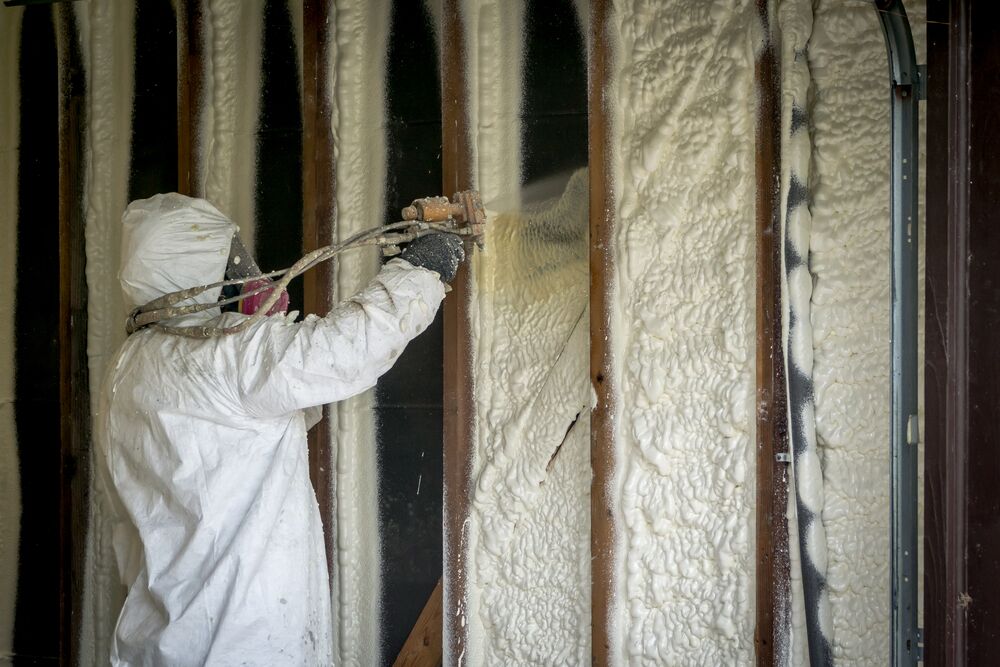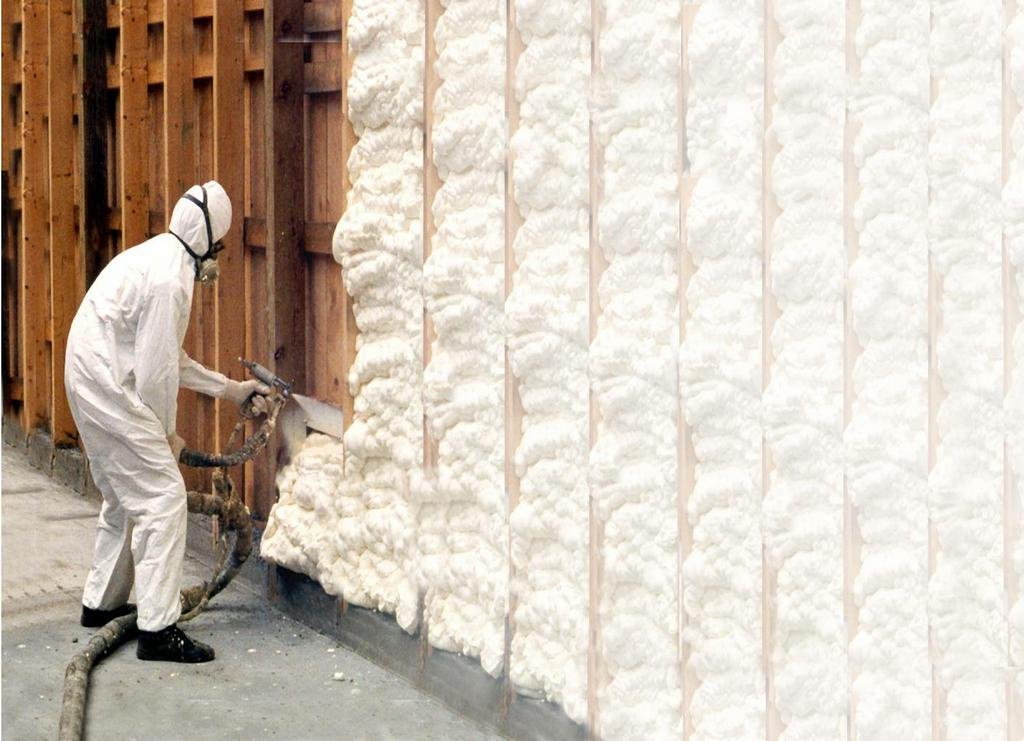views

Temperature-controlled barn insulation directly supports livestock health by regulating indoor climate. Extreme heat or cold affects animals’ immune systems, metabolism, reproduction, and behavior. Proper insulation shields livestock from rapid temperature changes, limits stress responses, and provides a consistent, dry, and well-ventilated environment. This isn't just about comfort—it's directly tied to productivity, fertility rates, and disease prevention.
Barn insulation goes far beyond energy savings. It plays a foundational role in the well-being of livestock. When temperature and humidity are stable, animals eat better, rest more, and grow efficiently. Respiratory problems decrease, bedding stays dry, and air quality improves—all of which translate to fewer illnesses and lower medical costs. This article explains how temperature-controlled insulation influences livestock health, compares materials, provides practical data, and outlines essential pre-installation factors.
How Insulation Impacts Livestock Health
Temperature swings disrupt livestock physiology. Cattle and pigs, for example, are vulnerable to heat stress when barn temperatures rise above 77°F. On the other hand, prolonged exposure to cold without adequate shelter reduces feed conversion efficiency and weakens immune function. Insulation addresses these extremes by keeping internal barn temperatures within healthy ranges.
Insulated barns also regulate humidity. When barns lack insulation, warm air condenses on cold walls and ceilings, creating moist conditions. Damp bedding and high humidity contribute to respiratory problems and bacterial growth. This is especially risky for young animals or high-density operations. Proper insulation reduces condensation and allows airflow to manage indoor air quality more effectively.
By maintaining a uniform microclimate, insulated barns promote healthier circadian cycles. Animals exposed to fluctuating light and temperature patterns often experience stress-related behaviors—such as pacing or reduced appetite—which can hurt production. Insulated barns minimize these disruptions.
Temperature stability supports:
-
Stronger immune responses
-
Improved fertility and birth outcomes
-
Consistent growth rates in young animals
-
Better feed efficiency
-
Lower mortality from stress-related conditions
Comparison of Insulation Materials for Livestock Facilities
Choosing insulation for barns isn’t just about R-values or price. Durability, moisture resistance, and compatibility with barn structure also matter. Below is a detailed breakdown of insulation types used in livestock buildings, showing how each performs under real farm conditions.
Spray foam consistently outperforms others in both thermal resistance and sealing ability. It fills gaps in older barns and prevents air leakage. However, it requires careful installation and has a higher upfront cost. Fiberglass, while affordable, can lose effectiveness in humid barns as it absorbs moisture. Rigid foam offers a balanced option and is frequently used in retrofits of metal structures.
Mineral wool stands out for fire safety and sound dampening. It is especially useful in barns with mechanical equipment or areas at risk of wildfires. Reflective foil only reflects radiant heat and doesn't work well in colder climates unless combined with another insulation layer.
Technical Specifications for Optimal Barn Insulation

These specifications ensure the insulation performs under typical barn conditions—moisture, temperature swings, and high animal density. Use these benchmarks when comparing materials or speaking with a professional during the planning phase.
Environmental Conditions and Livestock Health
Insulated barns allow more precise control of environmental factors such as humidity, airflow, and light. Proper barn ventilation works in tandem with insulation to balance fresh air intake without temperature drops. The goal is to move stale air, dust, and ammonia out while retaining warmth or coolness.
Temperature isn’t the only challenge. Moisture from animals, feed, and waste builds up rapidly. Without vapor barriers and sealed insulation, warm moist air hits cold surfaces and condenses. The result? Damp insulation, structural damage, mold, and diseases like pneumonia or foot rot. Over time, animals housed in such environments show chronic stress responses—lower weight gain, reduced milk output, and poor immune function.
Insulated barns also reduce outside noise and light fluctuation, which contributes to calmer animals. Less agitation reduces aggression in pigs and cows, improving safety for both livestock and workers.
Considerations Before Insulating a Livestock Barn
Climate zones matter. In colder regions, a higher R-value and vapor barriers are essential. Without them, insulation may trap moisture rather than protect against it. In warm, humid areas, focus on breathable but water-resistant materials. Ventilation should never be compromised—insulation must work with fans or passive airflow designs.
The type of livestock influences insulation needs. Dairy cows are extremely sensitive to heat stress and need climate-stable environments, especially during lactation. Pigs, particularly during farrowing, require warm, draft-free zones. Poultry, sensitive to both temperature and ammonia buildup, benefit from insulation that supports air filtration.
Also consider structural compatibility. Not all barns can support the weight or thickness of certain insulation materials. Retrofitting an older wooden barn with spray foam may require pre-treatment or repairs to existing framing. Metal buildings benefit from rigid foam boards or expert closed-cell spray foam that also prevents condensation.
Energy costs play a long-term role in selection. Though spray foam insulation contractors cost more initially, its ability to seal gaps reduces ongoing heating and cooling needs. It becomes cost-effective over time, especially in climates with extreme temperature swings.
Real-World Impact and Data
According to a 2024 USDA survey of mid-size livestock farms:
-
Operations that added temperature-controlled insulation reported 21% higher average daily weight gain in livestock
-
Energy consumption decreased by 25% over a full season
-
Veterinary interventions related to respiratory illness dropped by 18% across insulated facilities
These numbers reflect more than energy savings—they show how insulation affects animal productivity and welfare in measurable terms.
Practical Tips for Maintaining Insulated Barns
Check insulation annually for mold, water damage, or animal intrusion. Rodents and birds can nest in or tear down insulation if not sealed properly. Include insulation inspection in regular barn maintenance routines.
Pair insulation with automatic ventilation and climate control systems. Thermostats, fans, and sensors provide stable air quality, preventing buildup of ammonia or carbon dioxide. Use layered systems in cold climates—rigid boards against walls with foam in ceilings, for example—for best results.
Monitor humidity and temperature daily. Many problems stem from undetected moisture accumulation, especially in ceiling insulation. Hygrometers and thermal cameras help detect issues before animals are affected.
Common Questions About Temperature-Controlled Barn Insulation
Can insulation improve fertility in livestock? Yes. Animals experiencing thermal comfort have better reproductive performance. Cows and pigs in insulated barns show higher conception rates and healthier offspring.
Does barn insulation affect air quality? Properly installed insulation improves air quality when combined with ventilation. It prevents condensation and lowers ammonia levels, reducing respiratory problems.
How long does spray foam insulation last in a barn setting? Spray foam can last over 25 years when properly applied. It resists water and pests and requires minimal maintenance compared to other options.
What happens if insulation gets wet? Wet insulation loses its effectiveness and can harbor mold or bacteria. Moisture-resistant materials and vapor barriers are essential in humid environments.
Is retrofitting an older barn worth the investment? Yes. With proper preparation and sealing, older barns can meet modern performance standards. The benefits in animal health and energy savings usually outweigh the cost.
FAQ
What’s the minimum R-value for a livestock barn in cold climates? R-30 for ceilings and R-19 for walls is a good baseline for cold regions. More may be needed in areas with heavy snowfall.
Can you combine different types of insulation in one barn? Yes. It’s common to use spray foam in problem areas and batts or boards elsewhere. Combining methods can be cost-effective and efficient.
How does insulation affect barn noise? Insulation, especially mineral wool, reduces echo and machinery noise. This creates a calmer environment, especially important for poultry and pigs.
Does insulation attract pests or rodents? Improperly sealed insulation may. Spray foam and rigid boards resist infestation better than fiberglass.
Will insulation reduce heating costs in winter? Yes. Well-insulated barns retain heat better and require less supplemental heating, lowering fuel costs and improving comfort.
Summary
Temperature-controlled barn insulation is essential for maintaining animal health, productivity, and long-term operational efficiency. It regulates internal climate, reduces moisture, supports proper ventilation, and minimizes stress on livestock. Choosing the right insulation depends on livestock type, climate zone, and building structure. Spray foam, while expensive, offers unmatched performance. Rigid boards provide durability and moisture resistance. Fiberglass and reflective foil serve best in mild climates or as supplemental options.
Farmers should focus on integrating insulation with ventilation and climate systems, selecting materials that suit both environmental and animal-specific needs. Long-term benefits include healthier livestock, reduced veterinary costs, and lower utility bills. Insulation isn’t just a building material—it’s an investment in the health and stability of your livestock operation.

Reviewer: Maria Lopez reviewed the article and brought 12 years of insulation industry experience to improve the guidance. Practical tips were added, and the content was made clearer and more useful for contractors working in the field every day.




Comments
0 comment